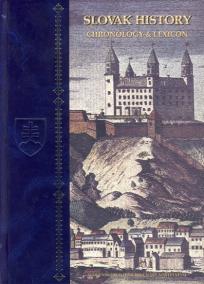Slovak History chronology lexicon
Dátum vydania: 01.12.2002
At the end of our millennium, historiography has experienced a renaissance. Interest in the past is expressed not just by specialists - historians, cultural workers or students of history -but also by individuals and groups in society whose specialization and work have little in common with history. Moreover, as globalization increases, the social space ...
Detaily o knihe
Počet strán: 350
Rozmer: 175x240x30 mm
Hmotnosť: 570 g
EAN: 9788008004008
Rok vydania: 2002
Žáner: Jazyky, vzdelanie
Typ: Knihy viazané
Zákazníci, ktorí si kúpili túto knihu, si kúpili aj...
O knihe
At the end of our millennium, historiography has experienced a renaissance. Interest in the past is expressed not just by specialists - historians, cultural workers or students of history -but also by individuals and groups in society whose specialization and work have little in common with history. Moreover, as globalization increases, the social space is becoming smaller. Today, the attention of many is attracted to countries and nations that, not so long ago, still seemed to be far away and in which previously there was tittle interest.
Sovak History: Chronology and Lexicon is made up of two sections. The first section, the calendar, records Slovak history chronologically from the first evidence about human beings on Slovak territory up to the events that took place in 1998. It consists of notations that summarize important historical events and phenomena. In the calendar individual periods are divided by introductory texts that briefly synthesize the characteristics and problems of the respective subsequent era. The second section is an encyclopedic dictionary. It contains three hundred, alphabeticallyarranged entries. These entries characterize the most important concepts, institutions and events, especially those that could not be appropriately incorporated or sufficiently treated in the chronological overview. The content of the chronology is graphically cross-referenced by dates, words or phrases set in bold type. These indicators call attention to dictionary entries or to chronological data that provide additional information on the specific issue and serves to bind together the text of the work. Genealogical tabtes of the longest reigning dynasties on the Hungarian throne, the Arpáds and the Habsburgs, a list of all rulers and presidents of those states to which the lands of Slovakial belonged (Great Moravia, the Kingdom of Hungary, Austria, Czechoslovakia, Slovakia), a list of recommended literature and a register of names are provided as appendices to the chronology.























